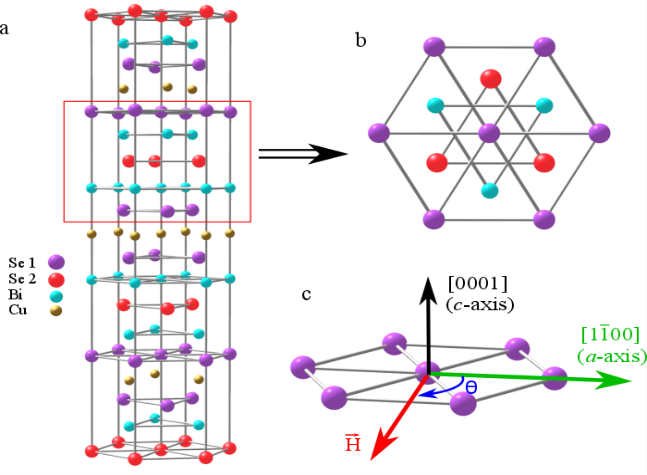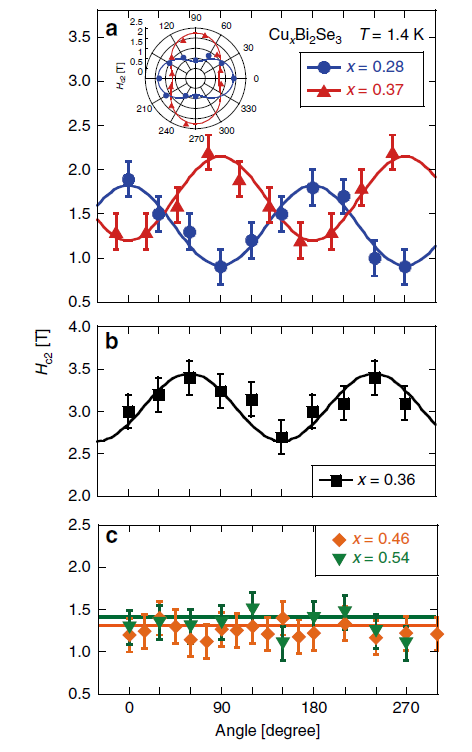Enlarge Image Figure Caption: upper critical field (Hc2) as a function of the angle between the externally-applied magnetic field and the crystal axis. For low Cu-content x, an oscillation shows up which indicates that the energy gap has a node (zero) somewhere. Disappearance of the oscillation means that the gap is uniform everywhere.
Enlarge Image
Discovery of fully-gapped topological superconductors with potential applications in quantum computing
Electric currents do not dissipate energy in superconductors because electrons in these materials move without resistive forces. Recent research shows that some superconductors can host surface states known as Majorana excitations that have potential applications in new-generation quantum computing. However, the conditions the superconductors must satisfy for such application are very stringent. Firstly, the wave function must be topological, namely, it should have twists like a Mobius band. Secondly, the energy gap must be opened everywhere in momentum space when the material becomes a superconductor. Notably, there are no reports to-date of bulk superconductors that fulfill these conditions.
Now, a research group at Okayama University led by Guo-qing Zheng, working in collaboration with researchers at the Chinese Academy of Sciences, has discovered that copper-intercalated Bi2Se3 (CuxBi2Se3)—that does not usually conduct electricity before doping— is a class of topological superconductors, where the energy gap is fully opened when the copper concentration x exceeds 0.46. This finding paves the way for applications to fault-tolerant quantum computers using bulk topological superconductors.
The CuxBii2Sei3 was produced by growing single crystals using an electro-chemical method and measuring the physical properties using techniques including nuclear magnetic resonance. In previous work published in 2016, Zheng and colleagues first demonstrated Cui0.3Bii2Sei3 to be a topological superconductor, but its energy gap is not fully opened. In this latest research, they succeed in intercalating more copper in-between the Bii2Sei3 layers. They found that when the copper content increases to 0.46 and beyond, the energy gap is opened everywhere in momentum space. These results make CuxBii2Sei3 (x≧0.46) qualify as the first class of bulk topological superconductors for potential applications to quantum computing.
Reference:
- Authors: T. Kawai, C.G. Wang, Y. Kandori, Y. Honoki, K. Matano, T. Kambe & Guo-qing Zheng.
- Title of original paper: Direction and symmetry transition of the vector order parameter in topological superconductors CuxBi2Se3.
- Journal, volume, pages and year: NATURE COMMUNICATIONS 11, 235 (2020).
- Digital Object Identifier (DOI): 10.1038/s41467-019-14126-w
- Journal website: https://www.nature.com/articles/s41467-019-14126-w
- Affiliations: Department of Physics, Graduate School of Natural Science, Okayama University.
- Department website: http://www.physics.okayama-u.ac.jp/zheng_homepage/
- Okayama University Scientific Achievement Repository:http://ousar.lib.okayama-u.ac.jp/ja/57939



